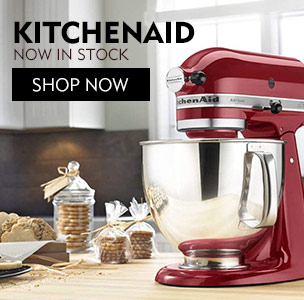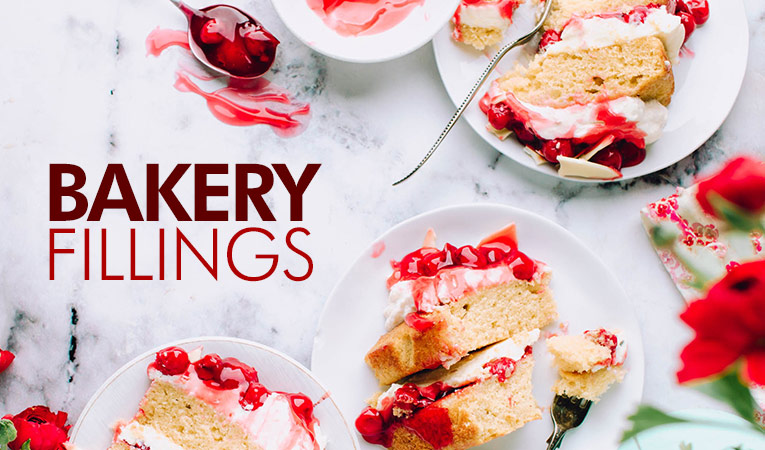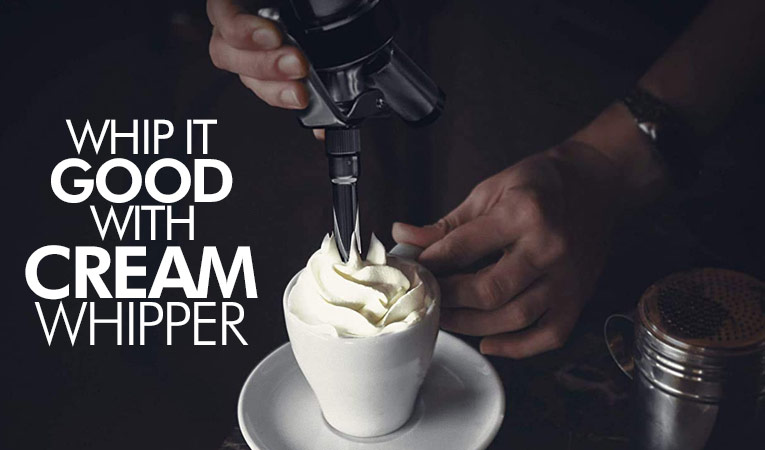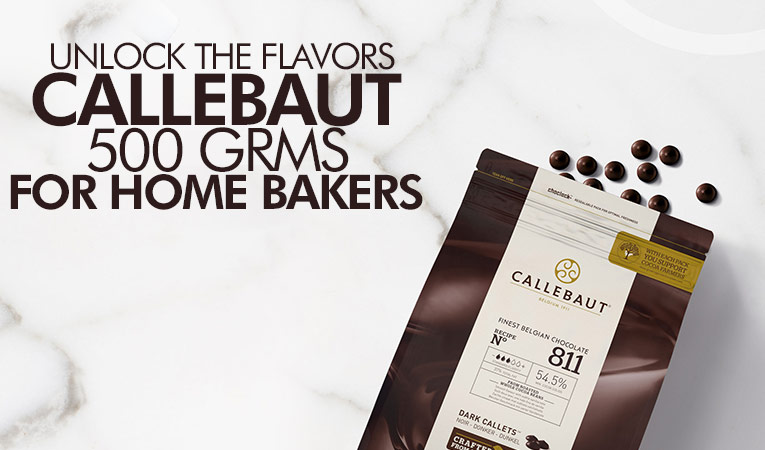Choosing the Right Sourdough Proofing Basket: A Baker's Guide
10-09-2023
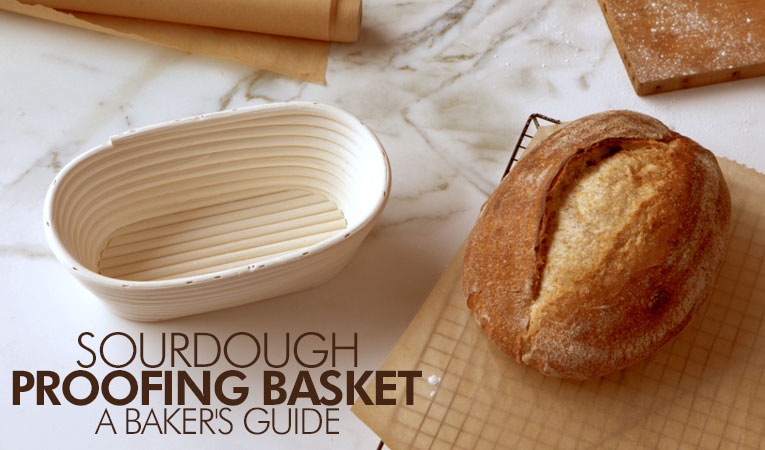
Embarking on a journey into the world of sourdough baking is a rewarding endeavor, but the path to creating that perfect, crusty loaf isn't just about the ingredients and technique. It's also about the tools you use, and the sourdough proofing basket is a fundamental one.
In this comprehensive guide, we delve into the art of choosing the right sourdough proofing basket. This seemingly simple tool can significantly impact the quality and aesthetics of your homemade bread. We'll explore the various types of proofing baskets available, the unique features that set them apart, and provide insights on how to make the perfect choice for your sourdough adventures.
Whether you're a seasoned sourdough enthusiast or just starting your bread-making journey, understanding the intricacies of proofing baskets is essential. So, let's roll up our sleeves, knead some dough, and embark on this exploration of selecting the ideal proofing basket to elevate your bread to new heights of perfection.
Round vs. Oblong Baskets: Which Is Right for You?
When it comes to selecting the perfect sourdough proofing basket, the choice between round and oblong can significantly impact your bread-making process and results. In this comprehensive guide, we'll explore the unique benefits and ideal use cases of both basket shapes, helping you make an informed decision.
Round baskets, also known as bannetons, are well-suited for boules and other round bread shapes. They provide excellent support during the final rise, helping your dough maintain its shape and structure. Additionally, their spiral patterns create beautiful rings on the crust.
On the other hand, oblong baskets, or brotforms, are ideal for longer bread shapes like baguettes or batards. Their elongated design encourages dough to take on its characteristic form, resulting in well-defined loaves with a rustic appeal.
Your choice ultimately depends on the types of bread you love to bake. If you enjoy crafting round, rustic boules, a round banneton might be your best bet. For those who prefer elegant baguettes or oblong loaves, an oblong brotform is the way to go.
Whichever you choose, both baskets enhance fermentation, promote even rising, and create that sought-after crispy crust. So, dive into the world of sourdough with confidence, armed with the knowledge of selecting the right proofing basket for your artisanal creations.
Material Matters: Rattan, Wood, or Cloth-Lined?
When it comes to sourdough proofing baskets, the choice of material can significantly impact your bread-making process. Let's delve into the options: rattan, wood, and cloth liners, and how each influences dough fermentation and shaping.
- Rattan Baskets: These are a popular choice among bakers. Rattan is a natural material that is breathable, allowing dough to breathe and maintain optimal moisture during proofing. The spiral pattern on the surface of rattan baskets also imparts an attractive design on your bread's crust. However, it's essential to dust these baskets with flour thoroughly to prevent sticking.
- Wooden Baskets: Wooden proofing baskets are durable and can last a long time with proper care. They, too, allow for good airflow, aiding in even dough fermentation. Some bakers prefer the distinct patterns these baskets create on the dough's surface. Ensure the wooden basket is clean and dry between uses to prevent mold growth.
- Cloth-Lined Baskets: These are often rattan or wood baskets lined with cloth. Cloth liners can be advantageous for stickier doughs as they prevent sticking and make it easier to release the dough. They also help retain moisture during proofing. However, you should ensure the cloth is well-floured to prevent dough from adhering.
The choice of material ultimately depends on your personal preferences and the type of bread you're baking. Rattan and wood are excellent for traditionalists who enjoy the aesthetics of spiral patterns on their bread. Cloth-lined baskets are versatile and user-friendly, making them ideal for those new to sourdough baking or working with wetter doughs.
Remember that regardless of the material, proper care is essential. Always clean and thoroughly dry your baskets after use to prevent mold growth, and lightly flour them before each use to ensure your dough releases effortlessly. With the right material and care, your proofing basket will become an indispensable tool in your bread-making journey.
Size and Shape Considerations
Choosing the right size and shape of a proofing basket is a crucial step in achieving the perfect loaf of sourdough bread. Here are some tips on selecting the ideal basket based on your bread recipe and desired loaf shape.
- Consider Your Recipe: The size of your proofing basket should align with the amount of dough your recipe produces. If you're following a recipe, it often specifies the dough weight or volume, which can guide your choice. For instance, a standard 9-inch round basket is suitable for a recipe that yields about 1.5 to 2 pounds of dough, while larger loaves may require bigger baskets.
- Loaf Shape: The shape of the basket should match the final shape you want for your bread. Round baskets are perfect for boules (round loaves), while oblong or oval baskets are ideal for batards (oval loaves). If you enjoy experimenting with various shapes, having both round and oblong baskets in your collection can be advantageous.
- Dough Hydration: Wetter, high-hydration doughs can spread out more during proofing. In such cases, you might opt for a round basket that allows the dough to spread naturally. For lower hydration doughs or when you want a more controlled shape, use an oblong or oval basket.
- Basket Depth: The depth of the basket also matters. Deeper baskets are excellent for dough with longer fermentation times, as they provide support during a more extended rise.
- Personal Preference: Ultimately, your choice should align with your baking style and aesthetic preferences. Some bakers enjoy the rustic look of a round, artisan-style loaf, while others prefer the elegance of an oblong shape.
Remember that owning a variety of basket sizes and shapes can provide flexibility and creativity in your baking. Over time, as you gain experience, you'll develop a better sense of which baskets work best for your favorite recipes and unique creations. Happy baking!
The Art of Patterned Baskets
Patterned proofing baskets, also known as embossed or decorative baskets, can add an artistic touch to your sourdough loaves, elevating their visual appeal. These baskets are not only functional but also serve as a canvas for intricate designs on your bread's crust. Here's a closer look at the art of patterned baskets and how they can enhance your baking creations.
- Intricate Designs: Patterned proofing baskets come in a variety of designs, from simple geometric patterns to intricate motifs inspired by nature. These designs are embossed onto the basket's surface and are imprinted onto the dough during the final proofing stage. As the bread bakes, these patterns darken, creating a beautiful contrast against the golden crust.
- Visual Appeal: Using patterned baskets can make your homemade bread resemble artisan loaves from a bakery. The designs not only add visual interest but also give your loaves a professional and polished appearance. This can be especially impressive when presenting your bread as a gift or at special gatherings.
- Easy to Use: Patterned baskets are as easy to use as traditional proofing baskets. Simply prepare your dough, shape it, and then place it seam-side up in the basket for the final rise. When it's time to bake, invert the basket onto your baking surface, and the patterned design will be revealed on the dough's surface.
- Versatility: These baskets are available in various shapes and sizes, including round, oval, and rectangular. This allows you to choose the one that best complements your bread's shape and size. Some patterned baskets are also made from different materials like rattan or wood, offering flexibility in your baking choices.
- Unique Presentation: Whether you're baking for your family or selling your bread creations, patterned baskets can set your loaves apart. They make each bread unique, showcasing your dedication to the art of baking.
Incorporating patterned proofing baskets into your sourdough baking routine can turn a simple loaf into a work of edible art. Experiment with different designs, shapes, and sizes to discover how they can add flair and sophistication to your homemade bread.
Round or Oval: Which Works Best for Your Kitchen?
When selecting a proofing basket for your sourdough adventures, one of the essential decisions is choosing between a round or oval shape. Both have their merits, and your choice can influence your baking process and results. Here's a guide to help you determine which shape works best for your kitchen:
Round Proofing Baskets:
Round proofing baskets are a timeless choice, known for their even dough distribution and classic loaf shape. They're perfect for bakers seeking simplicity and consistency.
- Classic Aesthetics: Round baskets are the traditional choice for proofing sourdough. They create that iconic, rustic round loaf with a beautifully domed top. If you love the classic look of artisan boules, a round basket is an excellent option.
- Ease of Use: Round baskets are straightforward to work with. Their symmetrical shape makes it easier to achieve an evenly risen loaf, making them ideal for beginners or those looking for fuss-free bread shaping.
- Versatility: Round baskets come in various sizes, from small for individual loaves to large for family-sized bread. This versatility makes them suitable for different bread recipes.
Oval Proofing Baskets:
Oval proofing baskets, on the other hand, offer versatility with their longer shape. They're ideal for those who want to experiment with different bread styles and fit them neatly into oval Dutch ovens or ovens with limited space.
- Space Efficiency: Oval baskets are particularly useful if your oven has an oval-shaped stone or baking vessel. They maximize your oven space, ensuring your bread bakes evenly. Additionally, oval baskets can be a better fit for narrow storage spaces.
- Unique Presentation: Oval-shaped loaves offer a distinct look. They are elegant and ideal for creating sandwich loaves or when you want your bread to stand out from the traditional round boules.
- Artistic Options: Oval baskets also allow for creativity. You can shape your dough to create braided or twisted loaves, which are visually appealing and great for special occasions.
In the end, the choice between round and oval proofing baskets largely depends on your personal preferences and kitchen setup. Consider your oven's shape, available storage space, and the types of bread you enjoy baking. Some bakers even opt for both shapes to have versatility in their bread-making endeavors. Regardless of your choice, the goal remains the same: creating delicious, homemade bread that suits your style and taste.
Maintaining Your Proofing Baskets
Your sourdough proofing baskets are valuable tools in your bread-making journey. To keep them in top shape and ensure they serve you well for years to come, follow these essential care and cleaning tips:
- Frequent Airing: After each use, allow your baskets to air-dry thoroughly. This helps prevent moisture buildup, which can lead to mold growth or unpleasant odors.
- Brush Off Excess Flour: Before storing your baskets, brush off any excess flour with a soft-bristle brush. This keeps the baskets clean and prevents flour residue from caking.
- Hand Wash Gently: If your baskets need cleaning, wash them by hand with lukewarm water and a mild detergent. Avoid using abrasive scrubbers or placing them in the dishwasher, as this can damage the material.
- Dry Completely: After washing, let the baskets dry completely before storing them. Placing them in direct sunlight for a short time can help eliminate any lingering moisture.
- Seasoning (For Rattan Baskets): If you have rattan proofing baskets, they may benefit from occasional seasoning. To do this, lightly spray or brush the baskets with a mixture of water and a few drops of oil (grapeseed or vegetable oil works well). Allow them to dry before using. This process prevents the rattan from becoming too dry and brittle.
- Store Properly: When not in use, store your proofing baskets in a cool, dry place. Avoid stacking them, as this can deform their shape over time.
- Rotate Usage: If you have multiple baskets, rotate their use to ensure even wear. This prevents one basket from deteriorating faster than the others.
By following these care and cleaning guidelines, you can extend the life of your sourdough proofing baskets and continue to create beautiful, delicious loaves of bread. With proper maintenance, these baskets become cherished tools that contribute to your bread-making success.
Conclusion
In the world of sourdough baking, the choice of a sourdough proofing basket may seem like a small detail, but it can have a profound impact on your final loaf. Whether you opt for the classic elegance of a rattan banneton or the versatility of a cloth-lined brotform, understanding the nuances of each type allows you to align your basket with your baking goals.
Consider the material; rattan baskets offer excellent moisture absorption, while wood exudes a rustic charm, and cloth-lined baskets provide a smooth finish. Factor in size and shape, always matching them with your specific recipe and desired bread shape. Delve into the world of patterned baskets to add an artistic touch to your bread's crust, making each creation a work of edible art.
Whether you choose round or oval, each shape has its strengths, so pick the one that aligns with your baking habits and kitchen setup. And remember, proper care ensures the longevity of your baskets. Treat them with respect, keep them clean, and they'll reward you with countless beautifully shaped loaves.
So, as you embark on your next sourdough adventure, armed with the knowledge of proofing baskets, may your loaves rise with grace and bake to perfection. With the right basket as your ally, every slice will tell a story of artisanal craftsmanship and culinary delight. Happy baking!

